18th June 2021
Dashboard warning lights you shouldn’t ignore
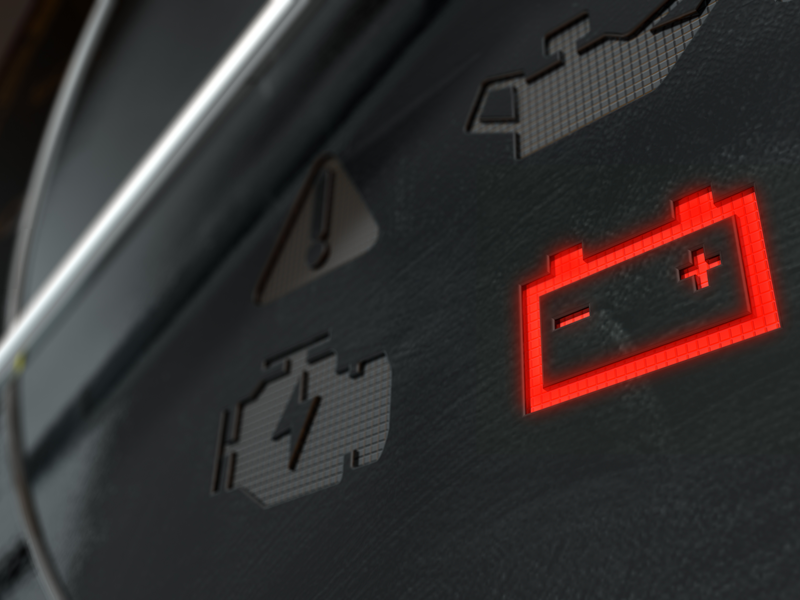
Ignoring a warning light on your dashboard can risk your safety and the safety of others. It can lead to a serious mechanical damage, or even a traffic accident if your vehicle fails whilst driving.
Therefore, it is important to respond if a warning light start flashing up at the earliest opportunity. It may seem alerting but try not to panic, find a safe location where you can stop and examine the risks. It is also important to study your vehicle’s handbook which includes information about the meaning of the warning lights.
With this in mind, we wanted to share some of the dashboard warning lights which you shouldn’t ignore if they stay on your dashboard whilst the engine is running.
Warning lights
Warning lights are displayed in red, amber, green and blue colour to communicate the level of urgency – red requires urgent attention. Please note, all warning lights should be taken seriously, in order to prevent damage or risks to safety.
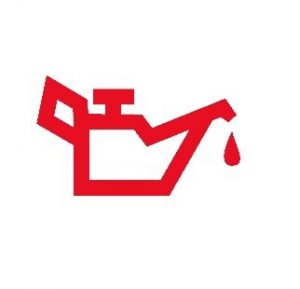 The oil pressure symbol indicates that the engine is running low on oil, or that there is a problem with the vehicle’s oil system. If there is enough oil the best thing to do is seek for an expert’s advice, otherwise you risk costly or even irreparable damage to your engine.
The oil pressure symbol indicates that the engine is running low on oil, or that there is a problem with the vehicle’s oil system. If there is enough oil the best thing to do is seek for an expert’s advice, otherwise you risk costly or even irreparable damage to your engine.
This being said, regular maintenance and scheduled oil changes are probably the best way to prevent this symbol from coming on.
 This sign represents the vehicle’s charging system. In case it comes on, that means that the system is not working properly. To prevent the battery from draining turn off anything that charges additional power e.g. radio, heating.
This sign represents the vehicle’s charging system. In case it comes on, that means that the system is not working properly. To prevent the battery from draining turn off anything that charges additional power e.g. radio, heating.
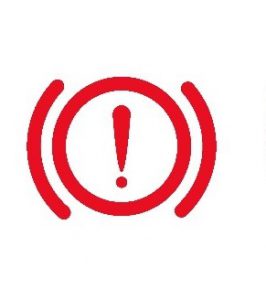 The brake warning light alerts that your parking brake is on, or that there is a problem with the vehicle’s braking system. If the parking brake is off, but the warning light is still on when the engine is running, don’t drive as this may put you and others at risk. Instead, contact a garage or roadside assistance.
The brake warning light alerts that your parking brake is on, or that there is a problem with the vehicle’s braking system. If the parking brake is off, but the warning light is still on when the engine is running, don’t drive as this may put you and others at risk. Instead, contact a garage or roadside assistance.
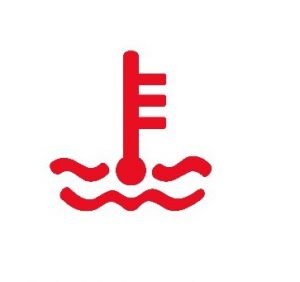 If the coolant temperature warning lights up, it usually means that your engine is overheating. It is important to take it seriously as overheating can cause engine damage. Pull over quickly to a safe place, shut your engine off and let your vehicle cool down. To check the fluid levels, take the radiator cap off only when the engine is cooled sufficiently and wear a thick glove or use a towel to remove it, as the heat can burn you.
If the coolant temperature warning lights up, it usually means that your engine is overheating. It is important to take it seriously as overheating can cause engine damage. Pull over quickly to a safe place, shut your engine off and let your vehicle cool down. To check the fluid levels, take the radiator cap off only when the engine is cooled sufficiently and wear a thick glove or use a towel to remove it, as the heat can burn you.
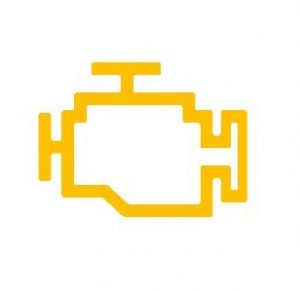 It is important to get your vehicle checked if the engine management warning light is flashing whilst you’re driving. It may be a minor fault, however it can also be an indicator for a serious issue with the engine.
It is important to get your vehicle checked if the engine management warning light is flashing whilst you’re driving. It may be a minor fault, however it can also be an indicator for a serious issue with the engine.
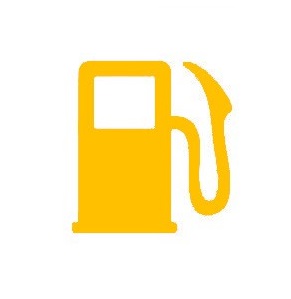 This symbol means that your vehicle is running low on fuel. Although you would still have some fuel left in the tank when the light starts flashing, it is recommended to find a fuel station as soon as possible.
This symbol means that your vehicle is running low on fuel. Although you would still have some fuel left in the tank when the light starts flashing, it is recommended to find a fuel station as soon as possible.
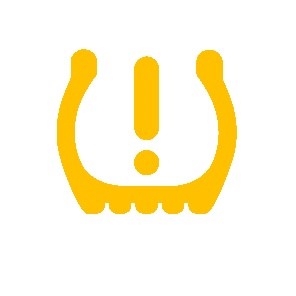 If the TPMS (Tyre Pressure Monitoring System) starts illuminating, it is trying to alert you that the tyre pressure is low. It is important to check and inflate the tyre. If you notice a puncture, you shouldn’t continue driving.
If the TPMS (Tyre Pressure Monitoring System) starts illuminating, it is trying to alert you that the tyre pressure is low. It is important to check and inflate the tyre. If you notice a puncture, you shouldn’t continue driving.